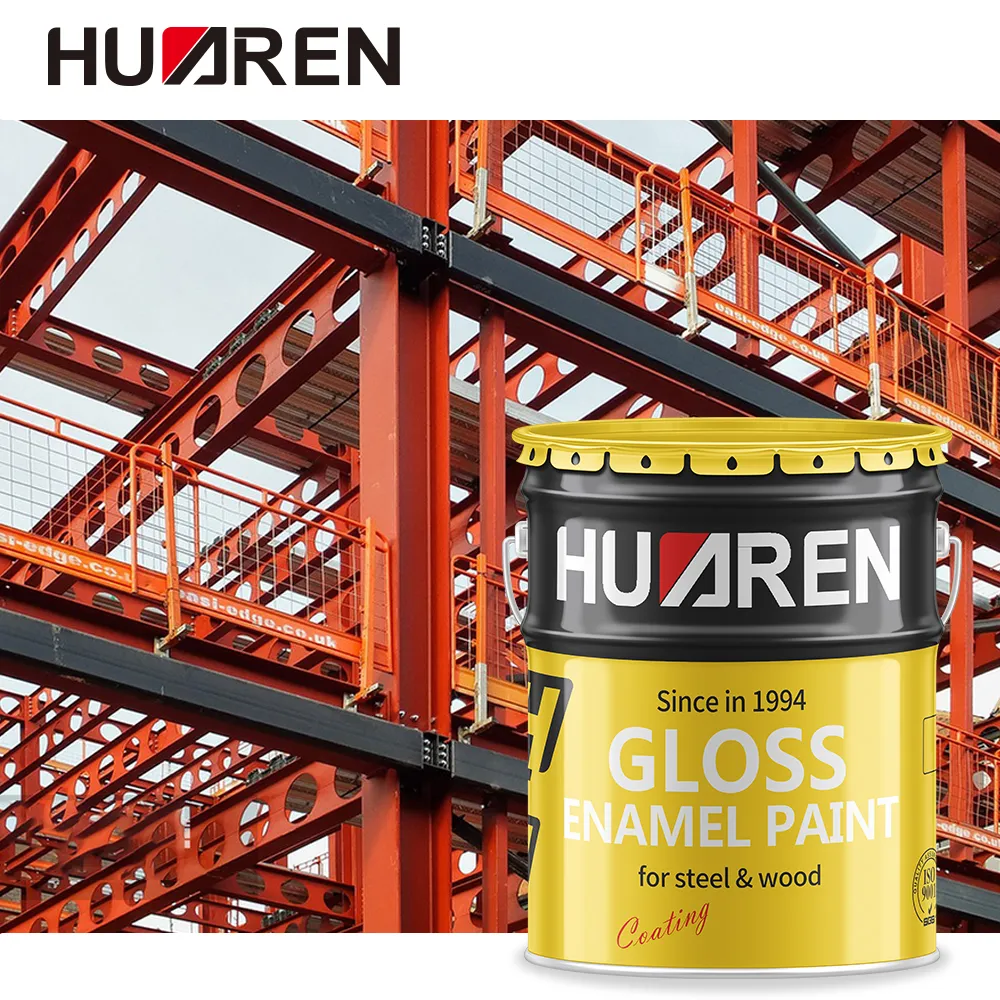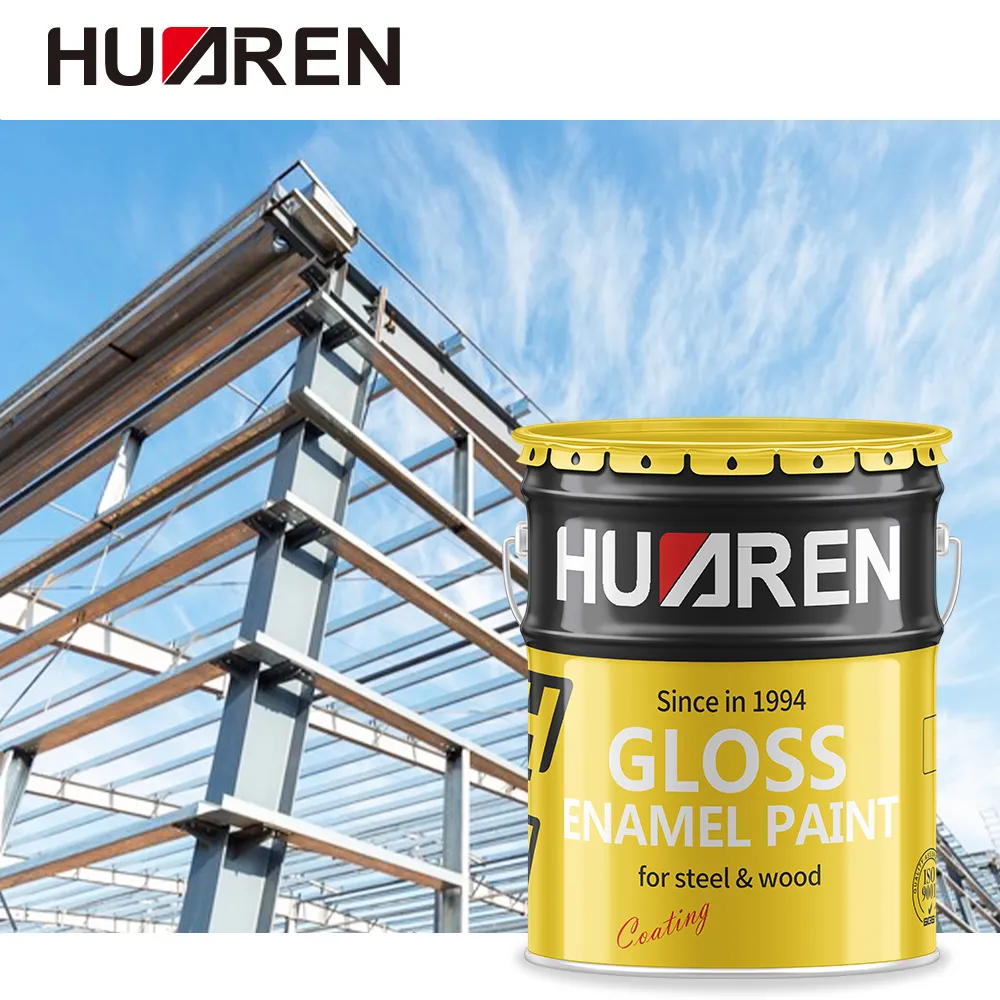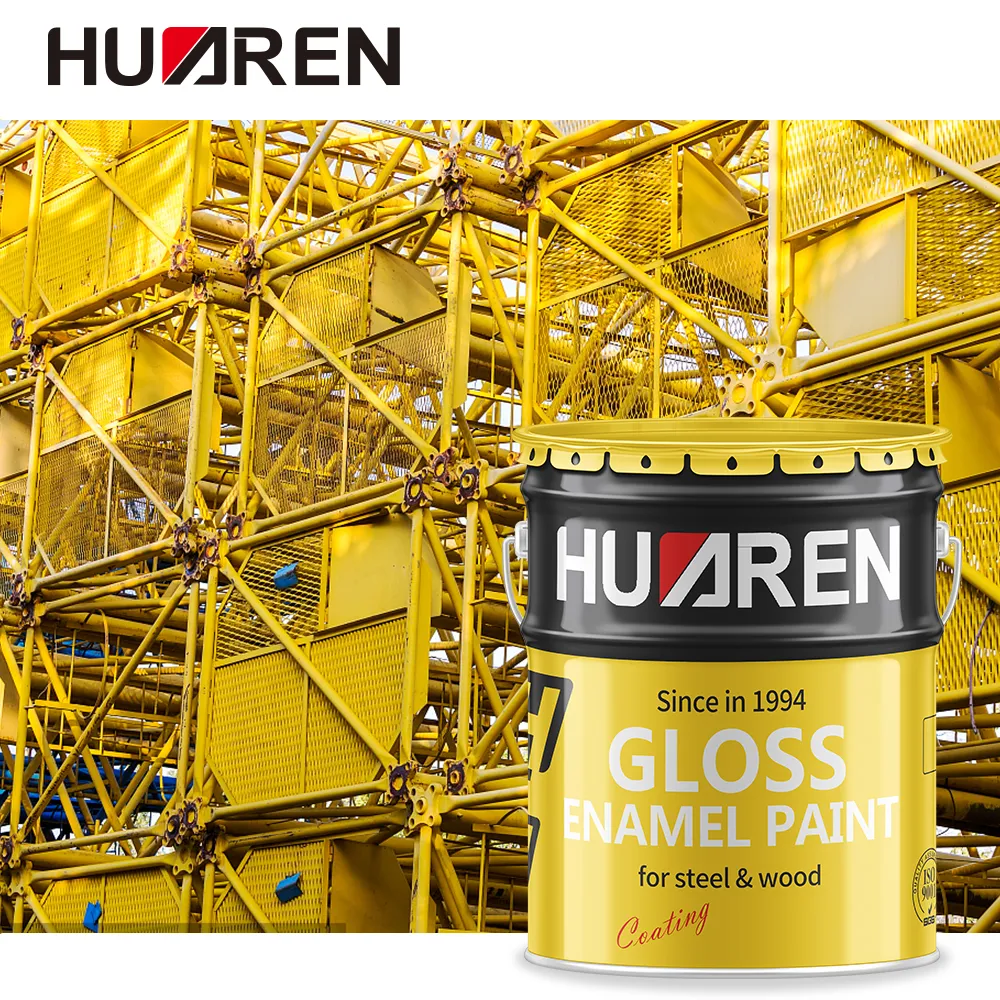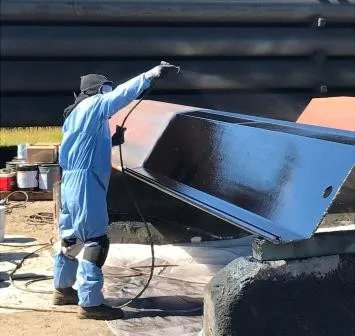Enamel paint is a common and very effective coating in the process of metal surface coating. It not only provides metal with a beautiful appearance, but also plays an effective protective role against corrosion, oxidation and wear. Regarding the number of coats of enamel paint, this is a key question, because the thickness and number of coats directly affect the performance, durability and final coating effect of enamel paint.
This article will explore the optimal number of layers of enamel paint on metal, analyze its working principle in detail, and provide some suggestions on how to use enamel paint correctly.

What are the characteristics of enamel paint?
Enamel paint is a protective coating composed of pigments, solvents and resins, which is often used on surfaces such as metal, ceramics, and glass. Compared with ordinary paint, enamel paint has higher weather resistance, chemical resistance and abrasion resistance, and its surface will form a hard, smooth, glass-like protective layer after drying.
Enamel paint has a wide range of applications and can be used on a variety of items such as automobiles, household appliances, outdoor facilities, metal doors and windows. The hardness and durability of this paint enable it to maintain a long-term protective effect even in extreme weather and harsh environments.
What is the basic process of applying enamel paint?
To apply enamel paint on metal, it usually takes these steps: metal surface preparation → primer application → multiple layers of enamel paint → drying and curing.
Metal surface preparation:
First, you need to make sure that the metal surface is clean, free of oil and rust. If the surface is uneven or has flaws, it needs to be polished and leveled. The better the surface preparation, the stronger the adhesion of the enamel paint and the better the coating effect.
Primer application:
The application of enamel paint usually requires a layer of primer to be applied to the metal surface to enhance the adhesion and durability of the enamel paint. The primer not only closes the pores on the metal surface, but also improves the adhesion and anti-corrosion performance of the enamel paint.
Multiple layers of enamel paint:
Depending on the type of enamel paint and the application environment, it is usually recommended to apply two to three layers of enamel paint. This not only ensures uniform coverage, but also increases the thickness of the enamel paint and enhances its protective properties.
Drying and Curing:
Each coat of enamel needs to be allowed to dry completely after application, and it is usually recommended to wait several hours or even a day before applying the next coat to ensure that the coating is fully cured.

How many coats of enamel should be applied to metal?
So how many coats of enamel should be applied to metal to achieve the best results? The answer depends on several factors, including the type of metal, environmental conditions, application scenarios, and the specific type of enamel.
The role of a single coat of enamel
A single coat of enamel is usually not enough to provide comprehensive protection. Although enamel paint is inherently hard and weather-resistant, a thin layer of enamel does not provide enough thickness to cope with long-term external wear and corrosion.
Single coats of enamel are usually only suitable for metal surfaces that are not susceptible to environmental corrosion or where short-term protection is required. If the metal is in an indoor environment and is not subject to wear and chemical attack, a single coat of enamel can provide basic protection and aesthetic effects.
However, a single coat can easily result in an uneven paint surface, especially on rough metal surfaces, where insufficient coverage may occur, resulting in a lack of adequate protection in some areas.
Advantages of Double-layer Enamel Paint
Double-layer enamel paint is the recommended practice in most cases. The first layer of enamel paint can adhere well to the primer or metal surface and provide initial protection. The second layer of enamel paint can further enhance the thickness of the coating and make the entire coating more durable.
Double-layer coating ensures that the enamel paint is evenly distributed on the metal surface, eliminating possible defects or weak points. In addition, double-layer coating can increase the wear resistance and corrosion resistance of the enamel paint and extend the service life of the metal surface. For metal structures exposed to outdoor environments, such as fences, metal furniture, outdoor appliances, etc., double-layer enamel paint can provide sufficient protection against moisture, ultraviolet rays, acid rain, etc. on the metal.
The ultimate protection of three-layer enamel paint
For metal surfaces that need to withstand harsh environments or long-term use, it is recommended to apply three layers of enamel paint. Three-layer coating is suitable for metal objects that are exposed to salt spray, strong acid, and strong alkali environments for a long time, such as ships, seaside facilities, industrial equipment, etc.
Three-coat painting provides extremely strong protection for metal surfaces, especially in highly corrosive environments, where the thickness of enamel paint can effectively resist the attack of chemicals and prevent metal rust or oxidation. In three-coat painting, each layer of enamel paint must be applied carefully to ensure sufficient drying time between coats. Due to the thickness of enamel paint, three-coat painting also requires more sanding and leveling to ensure a smooth and uniform final surface.

The role of primer: Does enamel paint need primer?
For enamel paint on metal surfaces, using primer is a crucial step. Primer not only improves the adhesion of enamel paint, but also provides an additional protective layer for metal.
Primer enhances adhesion
Metal surfaces are usually smooth, and enamel paint applied directly on them may not adhere firmly and is prone to peeling or cracking during use. Primer fills the tiny pores on the metal surface to create a rough interface, allowing enamel paint to better bond with the metal.
Different metals require different types of primers. For example, zinc-rich primers are often used on iron or steel, which not only enhance adhesion but also prevent rust. Metals such as aluminum or copper may require a special primer to ensure that the enamel does not blister or peel on these metal surfaces.
Primers provide additional corrosion protection
Metal surfaces are very susceptible to corrosion, especially metals exposed to humid or acidic environments. Primers act as a first line of defense to prevent air and moisture from coming into direct contact with the metal, thereby reducing the risk of corrosion. Zinc-rich primers and epoxy primers are both common types of anti-corrosion primers. Zinc-rich primers provide cathodic protection through electrochemical reactions, while epoxy primers prevent the entry of corrosive substances by forming a strong chemical barrier.
Use of primers with enamel paints
The choice of primer should be matched to the type of enamel paint to ensure good compatibility between them. In most cases, the manufacturer of the enamel paint will provide corresponding primer recommendations to ensure that the chemical composition of the two can effectively combine to obtain the best adhesion and durability.

What are the precautions in enamel paint painting?
The coating environment of enamel paint is very important. It is best to apply it under moderate temperature and humidity conditions and avoid painting in extreme weather. Too high a temperature may cause the enamel paint to dry too quickly, affecting its adhesion, while too high a humidity may cause bubbles or wrinkles in the coating. Secondly, each layer of enamel paint needs to be fully dried before the next layer can be applied. The drying time of enamel paint depends on the environmental conditions and the thickness of the coating, and it usually takes at least 12 to 24 hours to wait.
Huaren Chemical Industry Co., Ltd. is your trusted partner for high-performance industrial paints and resins. With nearly 30 years of experience, we have become a leading factory in China, supplying a broad range of coatings for steel structures, machinery, appliances, and construction projects. Our product portfolio includes epoxy and acrylic paints, alkyd coatings, nitrocellulose paints, and waterborne industrial coatings, designed to meet the demanding requirements of various industries. We take pride in delivering superior quality at competitive factory-direct prices. Whether you are looking for wholesale purchases, discounted rates, or customized formulations, Huaren Chemical can meet your needs. Explore our offerings today and secure attractive promotions for large-volume orders!

